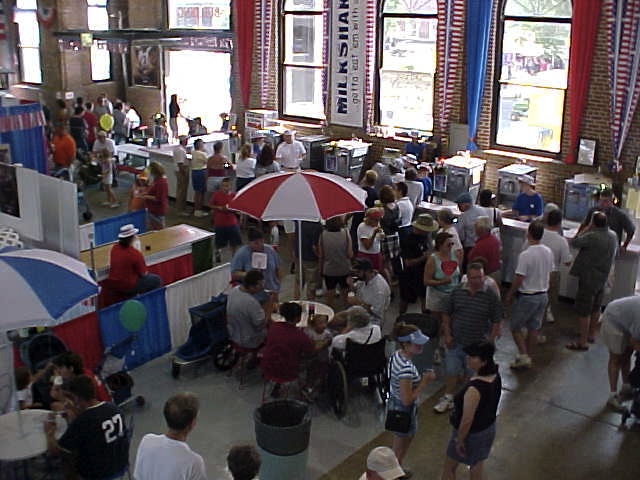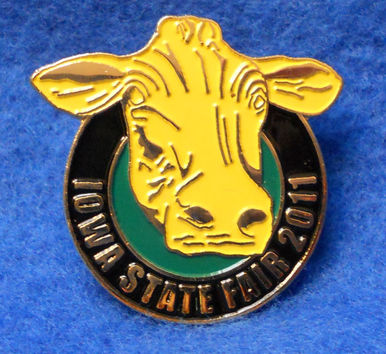Thus, much as Anderson argues the census, the map, and the museum shaped notions of identity and community, the buttercow stands as symbol of “us-ness.” Like the colonial map, it demarcates “us” from “them,” and acts as a logo, and becomes a “pure sign” or emblem for a certain kind of community affiliation. Its presence at the state fair attests to its authenticity, and to view the buttercow in an art gallery or other space outside of the agricultural milieu, would be to surrender it to the Other who cannot appreciate its intricacies, thus commodifying and degrading its form.
But where the buttercow parts from Anderson’s examination of colonial iconicity is in the work of reproduction. Anderson writes that it was the states ability to reproduce the icon—exemplified in the postage stamp—was instrumental in the logoization of state symbols. The buttercow presents an interesting example, because in some ways it has been logo-ized. The 1993 & 2011 Iowa State Fair collectors' pins were images of the buttercow. And the Iowa State Fair edition of the Monopoly board game features a space for the buttercow. But even these commodifications remain on a small scale among collector-enthusiasts, and are not necessarily readily available to outsiders. These ephemera stand not as widely circulating objects, but as limited edition symbolic items that allow enthusiasts to perform legitimate claims to identities connected to the buttercow or fair [much like travelers’ collections of photographs and hostel bracelets]. Thus, even in the process of logoization the authenticity of the buttercow is not only preserved, but bolstered through the limited circulation of ephemera.
2000 Imaging Difference: The Politics of Representation in Multicultural Art Education. Studies in Art Education 41(2):114-129.
Shepherd, Robert
2002 Commodification, Culture and Tourism. Tourist Studies 2:183-196.



 RSS Feed
RSS Feed
